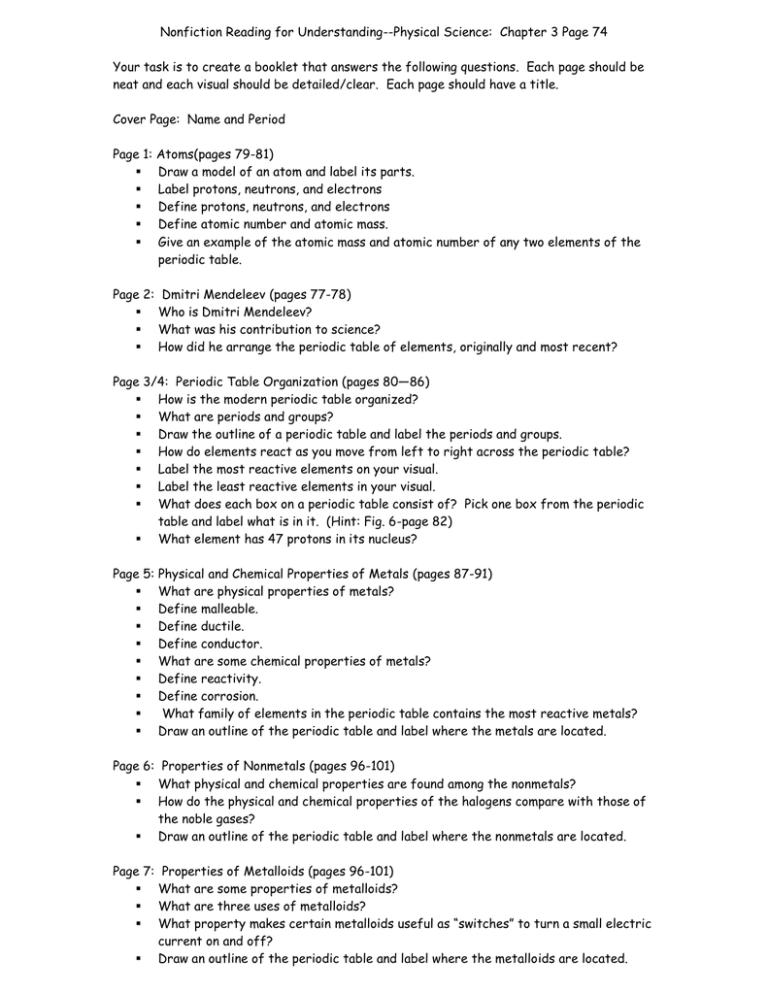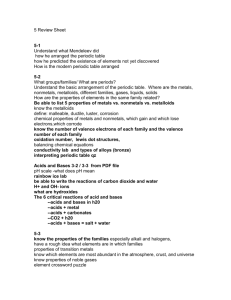Nonfiction Reading for Understanding--Physical Science: Chapter 3 Page 74
advertisement

Nonfiction Reading for Understanding--Physical Science: Chapter 3 Page 74 Your task is to create a booklet that answers the following questions. Each page should be neat and each visual should be detailed/clear. Each page should have a title. Cover Page: Name and Period Page 1: Atoms(pages 79-81) Draw a model of an atom and label its parts. Label protons, neutrons, and electrons Define protons, neutrons, and electrons Define atomic number and atomic mass. Give an example of the atomic mass and atomic number of any two elements of the periodic table. Page 2: Dmitri Mendeleev (pages 77-78) Who is Dmitri Mendeleev? What was his contribution to science? How did he arrange the periodic table of elements, originally and most recent? Page 3/4: Periodic Table Organization (pages 80—86) How is the modern periodic table organized? What are periods and groups? Draw the outline of a periodic table and label the periods and groups. How do elements react as you move from left to right across the periodic table? Label the most reactive elements on your visual. Label the least reactive elements in your visual. What does each box on a periodic table consist of? Pick one box from the periodic table and label what is in it. (Hint: Fig. 6-page 82) What element has 47 protons in its nucleus? Page 5: Physical and Chemical Properties of Metals (pages 87-91) What are physical properties of metals? Define malleable. Define ductile. Define conductor. What are some chemical properties of metals? Define reactivity. Define corrosion. What family of elements in the periodic table contains the most reactive metals? Draw an outline of the periodic table and label where the metals are located. Page 6: Properties of Nonmetals (pages 96-101) What physical and chemical properties are found among the nonmetals? How do the physical and chemical properties of the halogens compare with those of the noble gases? Draw an outline of the periodic table and label where the nonmetals are located. Page 7: Properties of Metalloids (pages 96-101) What are some properties of metalloids? What are three uses of metalloids? What property makes certain metalloids useful as “switches” to turn a small electric current on and off? Draw an outline of the periodic table and label where the metalloids are located.



